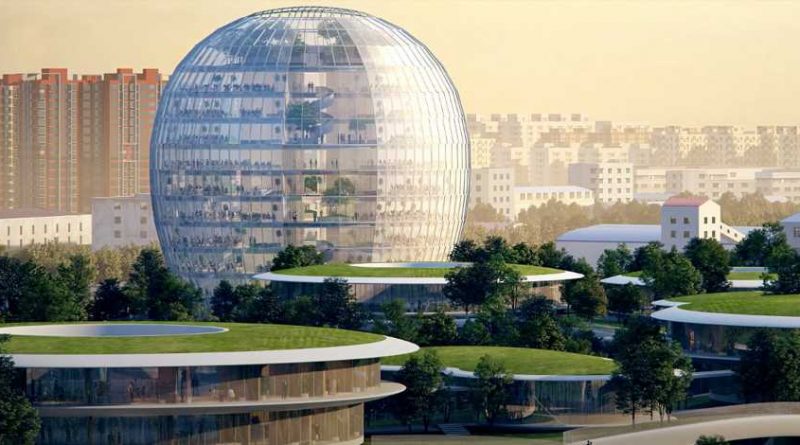China’s Futuristic New ‘Train Station in the Forest’ Is Half Park, Half Railway Station
Behold: the stunning 87-acre rebuild and renovation of the historic Jiaxing train station.
Jiaxing's new train station is set to be completed by July 1, 2021, though the project's sleek design and thinking reaches much further into the future. Borrowing elements of biophilic design, MAD Architects' vision aims to bring nature to the forefront, alongside some seriously sophisticated style.
Located in southeastern China and interconnected to Shanghai and Hangzhou, Jiaxing is a key city for several industries. Built in 1907, Jiaxing's original railway station was destroyed just 30 years later at the start of the Second Sino-Japanese War. The current project, which covers a renovation of 87 acres, includes a one-to-one scale, archival-led rebuild of the original station, as well as updates to the adjacent People's Park and the north and south plazas.
The project, being dubbed the "Train Station in the Forest," is led by Ma Yansong, who says train stations in China often compete against one another in the pursuit to be bigger, grander, and more monumental than the last, according to the architectural firm's website. Instead of competing to create more of the same, Yansong asks, "Is it possible for urban train stations to create their own beautiful environment, with comfortable scales, and a blend of transport and urban functions that are both efficient and humane? Is it possible for train stations to be more than a stopover for travelers, but an urban public space that people can enjoy?"
Jiaxing's 'Train Station in the Forest" is MAD Architects and Yansong's attempt at answering that question. Plans for the new station are fresh, futuristic, and forward-thinking. All transportation and most commerce elements will be relocated underground, leaving the ground floor of the station to act as an extension of the surrounding natural landscape, ultimately creating the feeling of a borderless park. However, don't expect the subterranean station to be dim and grim — the spaces will be airy and open, sleek and polished, while skylight ceilings and glass curtain walls bring in swaths of natural light and live trees maintain a connection to the nature found above ground.
The new designs also address the logistics and infrastructure of the current station, which has been plagued by disorder and reached its capacity limits. In addition to functioning as the city center transportation hub for long-distance and local services, the station will also serve as a way to revitalize the area that is currently in a state of decline. The old station will be converted into a museum and be visible from the subterranean level walkways, which include futuristic-looking connection corridors rimmed with solar photovoltaic panels, one of the station's snazzier sustainability features. It seems that rebuilding on the grounds of beloved-but-once-destroyed train stations may be a trend in 2021. On Jan. 1, Manhattan's new Moynihan Train Hall opened, rebuilt on the site of the original Penn Station, with a beautiful design nodding toward the past.
For those who can't wait to glimpse the future, you can take a virtual tour of the train station here.
Source: Read Full Article



